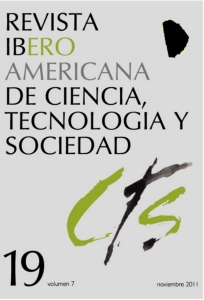The criticism to the technique in Arendt
an interpretation of the unexpected
DOI:
https://doi.org/10.52712/issn.1850-0013-731Keywords:
technique, device, unforseeability, actionAbstract
The work tries to approach the three issues or presumptions about the technique and the technical production in Hannah Arendt. Firstly, that all produced object or device conditions the reflexivity of the operating individual. Secondly, that every action thought from the technical era leads to the called “unforseeable consequences”. And Thirdly, that there exists a moment of previous decision to all artefactual production that, due to their unforseeable consequences, escapes from the principles that regulate it. Then, the interpretation of Anders will be considered regarding what does thinking action models about the technical era mean, and its contribution in complementing the vision of Arendt on the matter.
Downloads
References
ANDERS, G. (1956): Lo anticuado del hombre: sobre el alma en la era de la segunda Revolución Industrial, Ed. Verlag Beck, Munich.
ANDERS, G. (2004): “Tesis para la era atómica”, en Artefacto: pensamiento sobre la técnica.
ARENDT, H. (1998): The Human Condition, Chicago, University of Chicago Press.
ARENDT, H. (2005): De la historia a la acción, Buenos Aires, Paidós.
FEENBERG, A. (2004): Questioning technology, New York, Routledge.
Downloads
Published
How to Cite
Issue
Section
License
Copyright (c) 2024 CC Attribution 4.0

This work is licensed under a Creative Commons Attribution 4.0 International License.
All CTS's issues and academic articles are under a CC-BY license.
Since 2007, CTS has provided open and free access to all its contents, including the complete archive of its quarterly edition and the different products presented in its electronic platform. This decision is based on the belief that offering free access to published materials helps to build a greater and better exchange of knowledge.
In turn, for the quarterly edition, CTS allows institutional and thematic repositories, as well as personal web pages, to self-archive articles in their post-print or editorial version, immediately after the publication of the final version of each issue and under the condition that a link to the original source will be incorporated into the self-archive.











